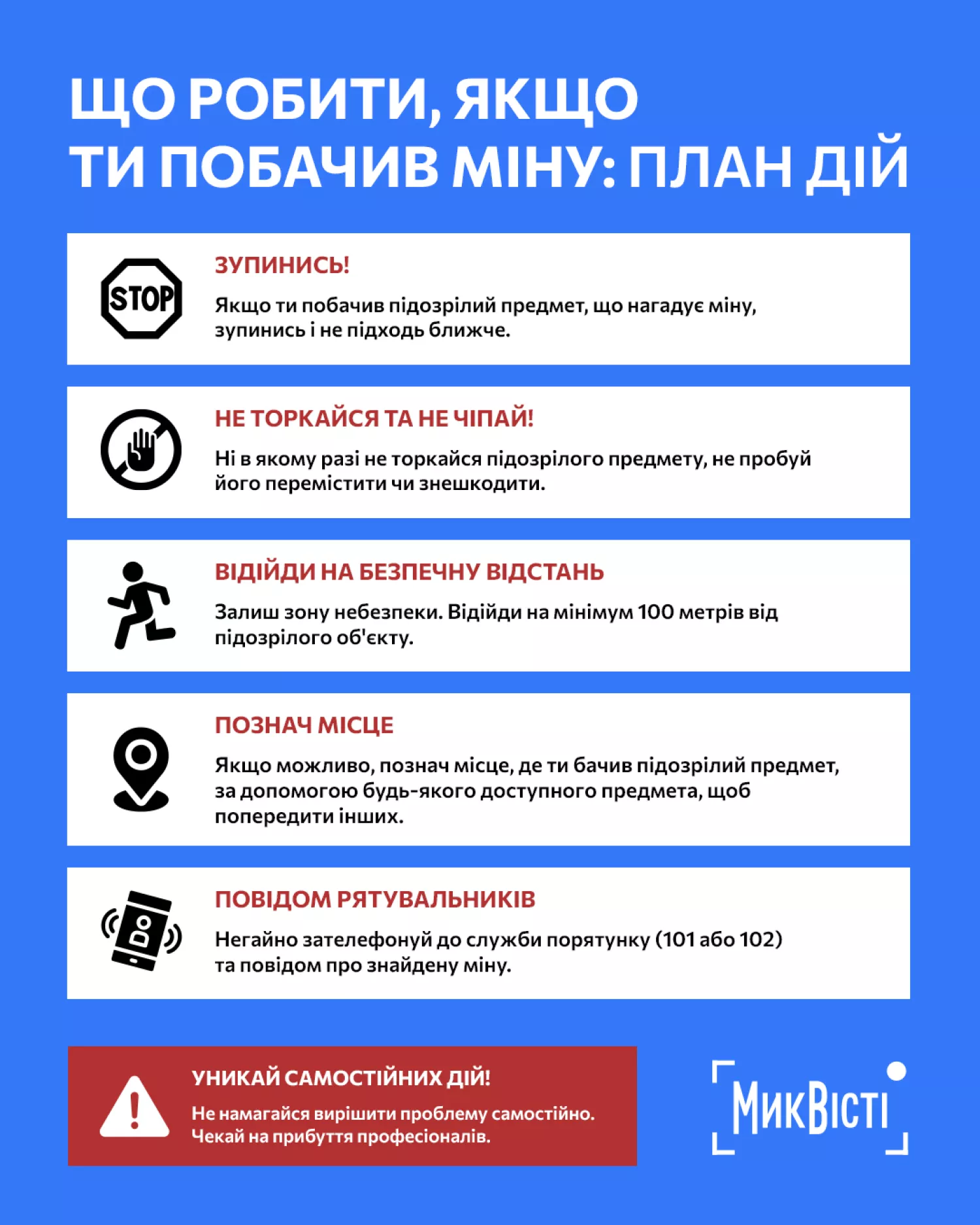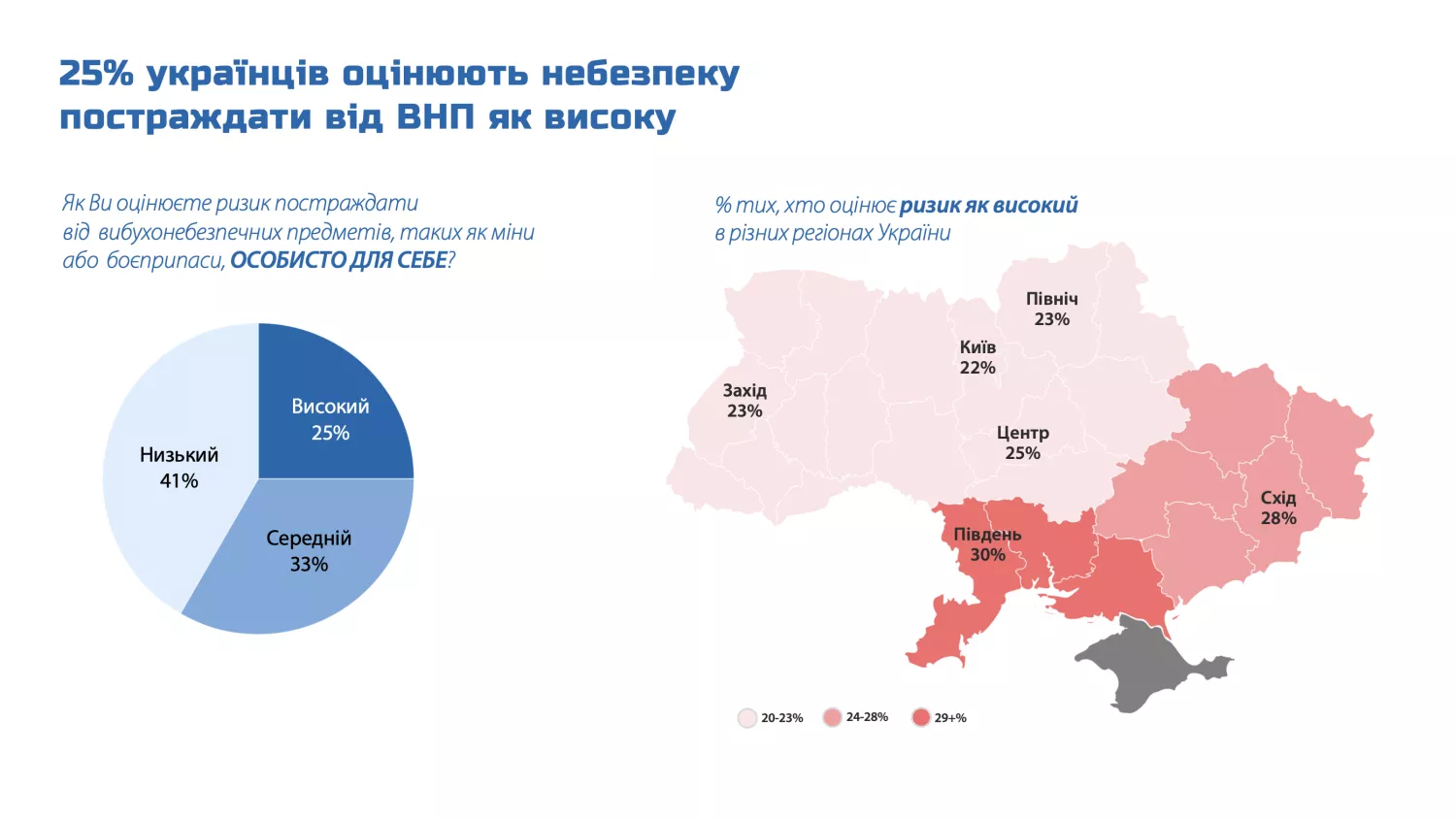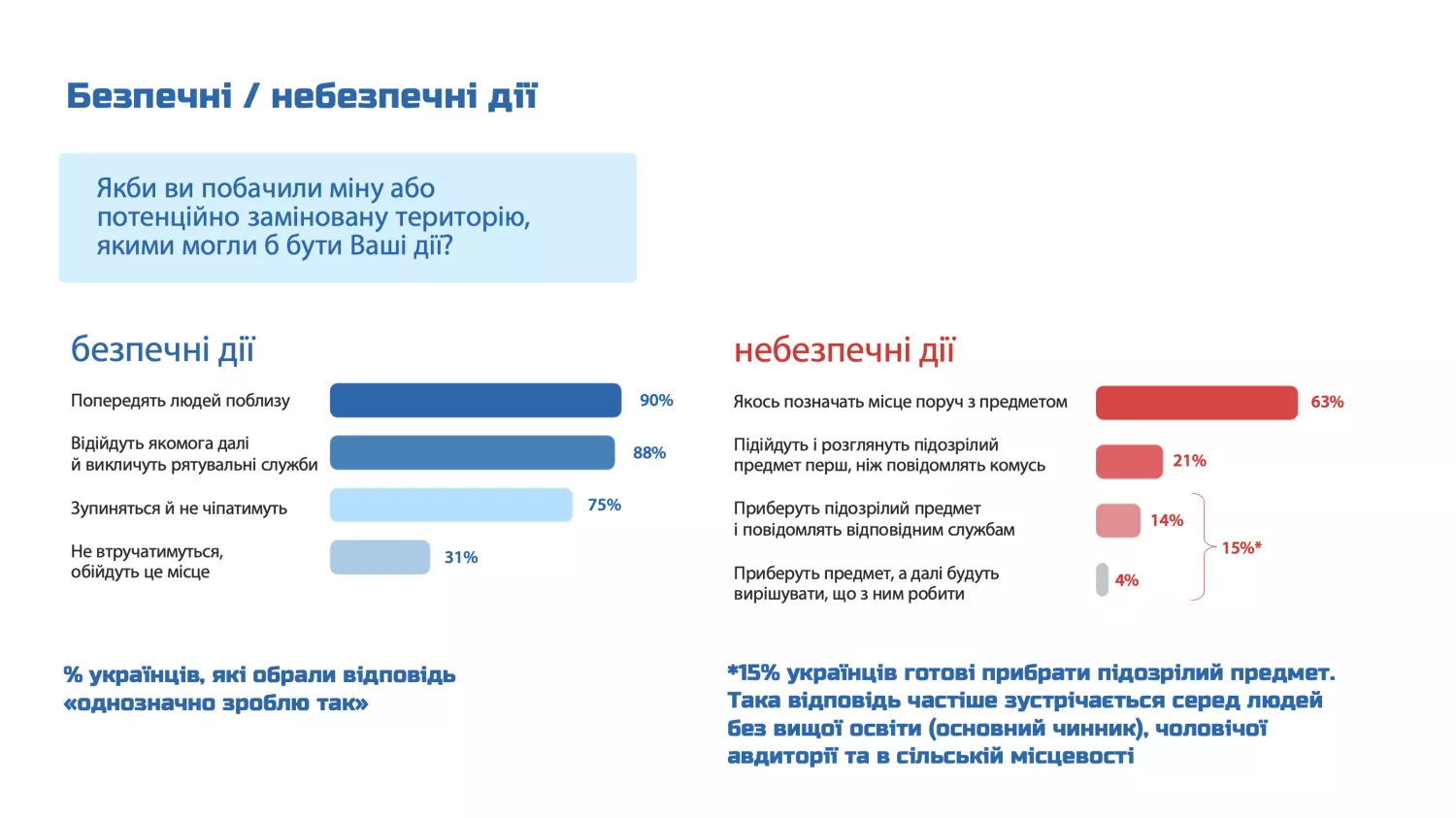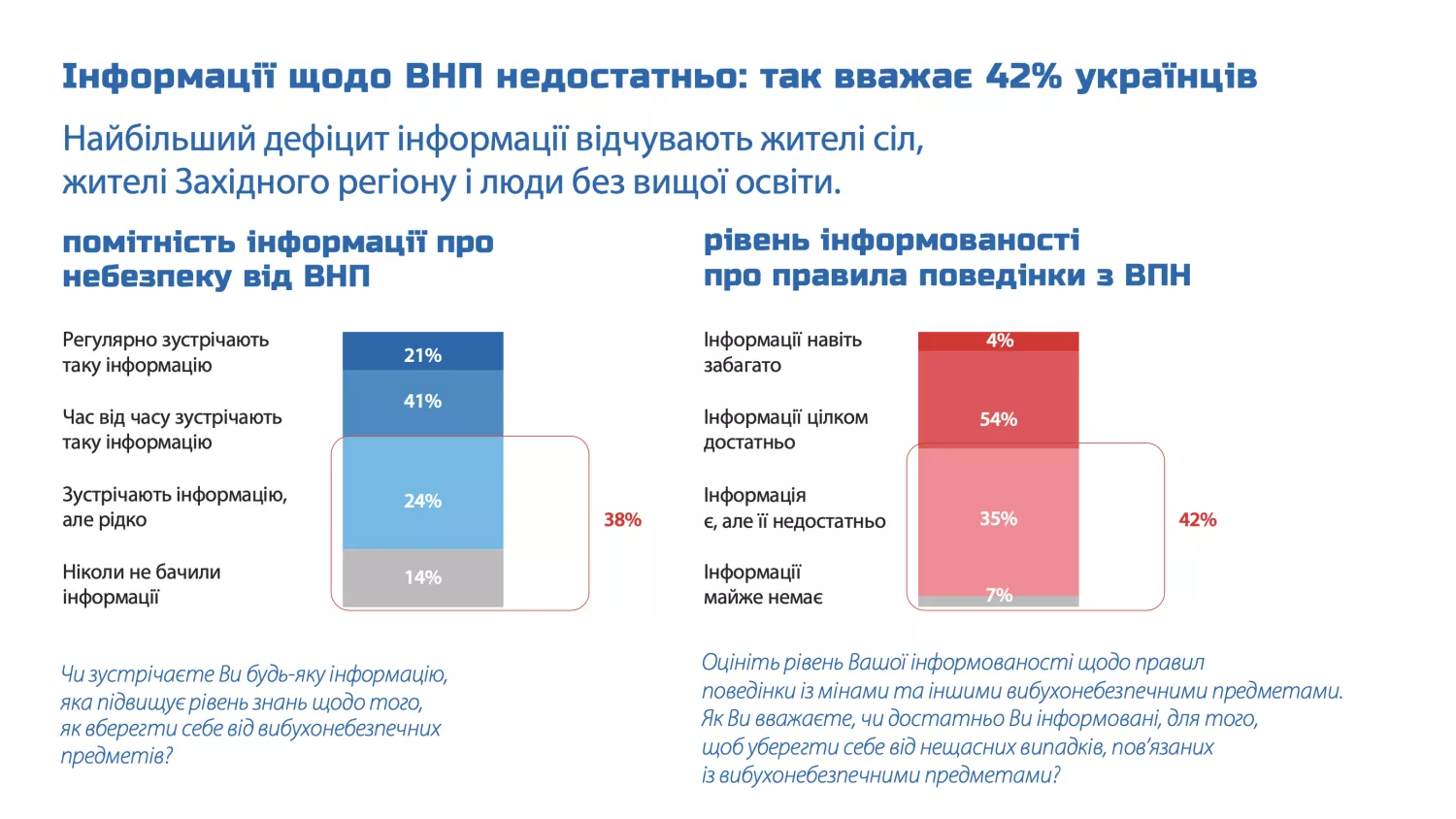Buried Danger: Why Mykolaiv Must Boost Mine Awareness
- Darina Melnychuk
-
•
-
10:55, 21 May, 2025
 Demining Solutions specialists are conducting «reconnaissance» with a drone in Mykolaiv region. Photo: NikVesti
Demining Solutions specialists are conducting «reconnaissance» with a drone in Mykolaiv region. Photo: NikVestiMine danger is one of the main threats to civilians in the de-occupied territories of Ukraine. In Mykolaiv region, surveys, demining, training and public awareness activities are carried out daily. However, despite the active work of specialists, the risk level remains high and people still do not have enough information.
According to a nationwide survey, 42% of Ukrainians believe they do not receive enough information about mine risk, with the greatest lack of information experienced by rural residents and residents of western regions. At the same time, 25% of respondents consider the risk of injury from explosive hazards to be high; in the South, this figure rises to 30%. Despite this, the threat from mines ranks only 11th among the issues of greatest concern to Ukrainians.
In this interview, NikVesti spoke to Tetiana Velshyna, a leading expert in humanitarian demining and a specialist with the United Nations Development Programme (UNDP) in Ukraine. She has more than 10 years of experience in mine action education, has worked with international organisations, participated in the development of safety strategies, and leads community awareness teams.
Tetiana told us which communities in Mykolaiv region have suffered the most, what types of mines are found in the fields and what difficulties demining teams face. We also learned about the reaction of local communities to non-technical surveys and why demining is not only the work of explosive experts, but also a matter of trust and cooperation with people.
The conversation has been shortened and edited for clarity.
 Humanitarian demining expert in the field of mine safety education Tetiana Velshyna. Photo: NikVesti
Humanitarian demining expert in the field of mine safety education Tetiana Velshyna. Photo: NikVestiWhich regions in Ukraine remain the most affected and why?
The most affected regions are those that have been occupied or where hostilities are ongoing. These include Mykolaiv, Kherson, Sumy, Zaporizhzhia, Kyiv and Chernihiv regions. All these areas remain potentially dangerous.
What is the current situation with the mine threat in Mykolaiv region? Which areas are most affected?
In Mykolaiv region, about 25% of the territory is potentially contaminated with mines or explosive devices. The communities that have been most affected are those that have been under occupation or where hostilities have taken place, including Shevchenkove, Halytsynove, Pervomaisk and Horokhivka.
What types of mines or shells are most commonly found in the region?
Almost all types of modern mines and ammunition are found on the territory of Mykolaiv region. These include anti-personnel mines, anti-vehicle mines, third-generation mines with seismic sensors, remote mining, and cluster munitions. The region is contaminated with the most modern types of mine weapons.
How active are demining teams in Mykolaiv region?
Humanitarian demining in Mykolaiv region is active. The process involves the State Emergency Service (SES), the State Transport Service, national and international operators, as well as the United Nations Development Programme (UNDP).
UNDP is conducting a non-technical survey of the areas to identify or remove sites from the list of potentially contaminated areas. More than 130 destroyed buildings and more than 70 agricultural plots — covering more than 4 million square metres — have already been inspected. There are three survey teams and two teams that raise awareness of mine risks, including in educational institutions and communities.
In addition, UNDP provides the SES with modern equipment and supports the Mine Action Centre. The emphasis is on the long-term nature of demining, which requires time, money and human resources.
What are the most common difficulties encountered during demining in Mykolaiv region — natural, technical or logistical?
The biggest difficulty of demining in Mykolaiv region is performing work in the conditions of war and active hostilities. The key challenges are the safety of specialists, high levels of contamination and natural conditions.
In particular, last summer, the region experienced an abnormal heat wave of over 40°C, which forced the demining teams to suspend their work, as some procedures become dangerous to health at such temperatures.
The process is also complicated by mineralised soils that create background noise for metal detectors and a high density of contamination — anti-personnel, anti-vehicle mines and ammunition are found in the fields at the same time.
Another challenge is the invisibility of threats: most dangers are hidden underground. To work effectively, the teams use innovative methods, including drones for surveys, which are supported and funded by UNDP. However, the scale, risks and complexity of identifying threats remain the main barriers.
How is mine risk education organised for local residents, including children?
Mine risk education for local residents, including children, is organised through civil-military administrations, relevant departments, and district and local communities. At the local level, information teams or coordinators work with community representatives to identify priority locations for information sessions.
The main criteria for identifying such locations are:
-
cases of mine incidents that have already occurred (an indicator of risky behaviour of the population);
-
reports of explosive ordnance being found (even without casualties).
These signals help to focus work on the most vulnerable communities and prevent new tragedies through awareness raising.
Mykolaiv region in top 3 by number of mine explosions
Mykolaiv region is among the top three in Ukraine by the number of mine incidents. As of today, 102 cases of people injured by mines or explosive devices have been officially registered, but the actual number of incidents is likely to be much higher due to incomplete registration.
This situation indicates a high level of danger and the need for increased public awareness. A recent national survey conducted by UNDP in partnership with BBC Media Action and Humanity and Inclusion found that only 42 per cent of Ukrainians believe they receive enough information about mine risk, highlighting the need for new approaches to communication.
Have people's attitudes to safety changed after the information campaigns?
Yes, after the information campaigns, there is a positive trend in people's attitudes towards mine safety rules. This is confirmed by pre- and post-tests conducted during each information session. They show that at first, many people do not understand how to behave safely or have misconceptions — for example, they believe that marking an explosive device yourself is a safe action, but it is not.
According to the survey, 30% of the population of southern Ukraine (including Kherson and Mykolaiv regions) are aware that they are in a high-risk area. This underscores the importance of continuing to inform and correct dangerous perceptions.
What is the main difference in the perception of mine risk between the South and the North of Ukraine?
The main problem with the perception of mine risk is not regional differences, but rather the behavioural patterns of people, regardless of where they live. The most dangerous thing is the routinisation of the threat, when people get used to the presence of mines and explosive devices and begin to take them for granted.
People often mistakenly believe that if an explosion hasn't happened before, nothing will happen now. In fact, any interaction or even being near such items is already a threat. Explosive remnants have no statute of limitations, and even old ammunition can still work.
Another problem is attempts to defuse ammunition on your own or delay in calling the State Emergency Service, which often leads to fatal or serious consequences. The only right decision is to call 101 immediately and not touch the item. No «heroism» is required — it is dangerous and can cost lives.
Is there a difference in the level of mine risk awareness in Mykolaiv region compared to, for example, Chernihiv or Kharkiv?
The level of mine risk awareness among the population remains insufficient both in Mykolaiv region and in Ukraine as a whole. According to national data, 42 per cent of people believe they do not have sufficient knowledge, and even among those who have received information, it is not enough.
The main reason for this is that information is not a one-off event. It should be an ongoing process adapted to different audiences, using interactive, modern methods targeted at specific groups — children, teachers, farmers, etc.
Although awareness sessions are being actively conducted in Mykolaiv region, the large number of mine incidents shows that current efforts are not yet having the expected effect. Awareness raising should not only transfer knowledge, but also change people's behaviour, which is the main goal. The real outcome is a reduction in the number of incidents, not the number of events.
Can you give an example of when training actually saved lives or prevented a tragedy?
Mine risk education has already saved lives in real-life situations. One example is when workers who had been trained discovered a grenade while clearing rubble after a shelling, immediately stopped the work, called the State Emergency Service and avoided a tragedy. This was made possible by a preliminary non-technical survey and awareness sessions.
In another case, a man who had been trained saw children playing with a detonator in the yard. He reacted instantly by stopping the children and calling the rescuers, which probably saved several lives.
These stories confirm that information works when it reaches people and influences their behaviour.
How do communities react to non-technical surveys — is there resistance, misunderstanding, or support?
Communities in Mykolaiv region have always supported the non-technical assessment (NTA) process — there has been no resistance or misunderstanding. All work is agreed with the Mine Action Centre and the civil-military administration, and communities are informed in advance.
Residents are well aware that NTA is the primary and critical stage of humanitarian demining, without which no action can be taken. The teams involve community representatives, landowners and witnesses, conduct analysis, use drones, collect evidence and generate a report that is entered into the national database. Only then does the operator get involved for the actual demining.
The support from the communities is full and conscious, as it is about their safety and return to peaceful life.
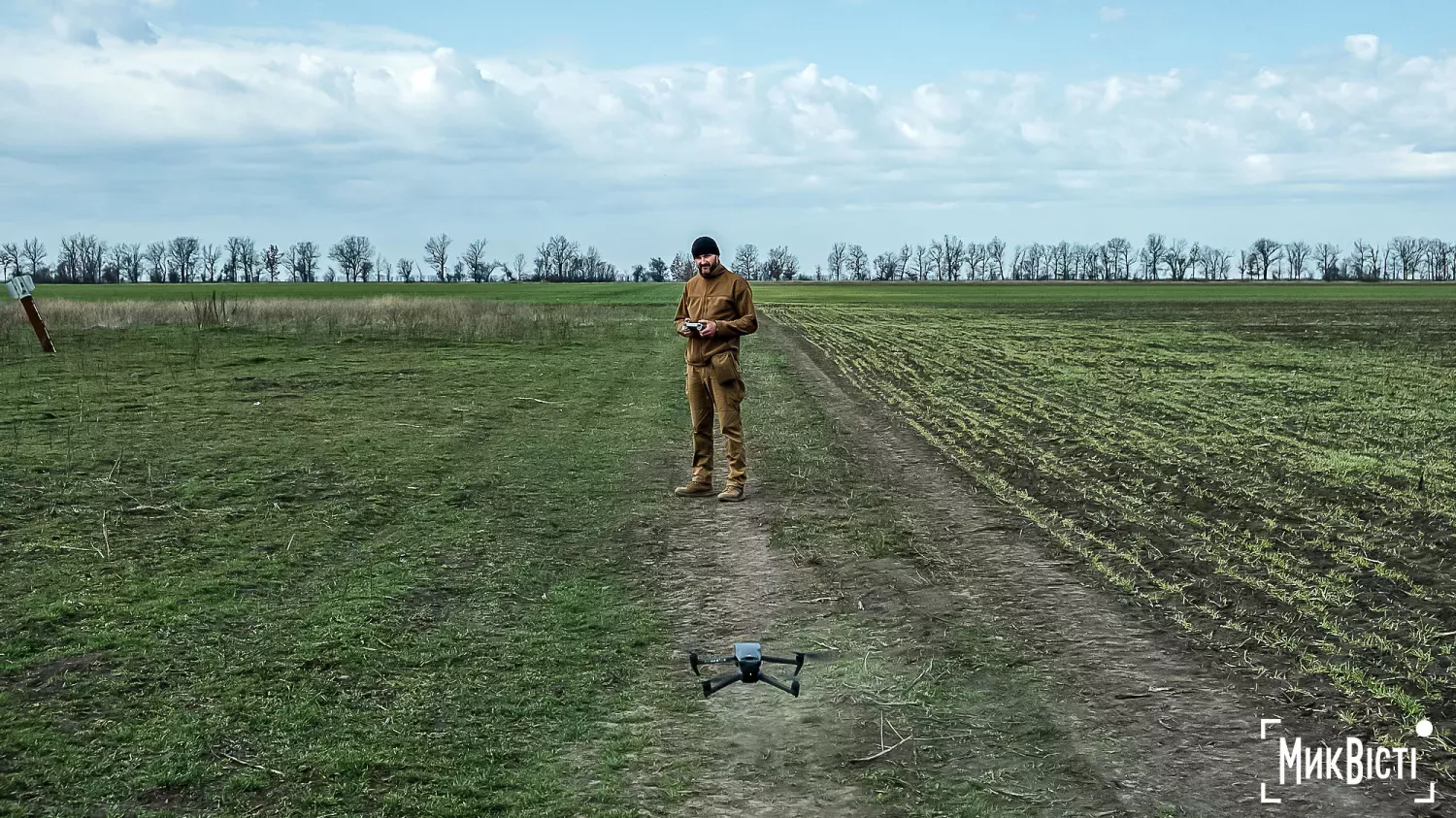 One of the NTA team members lifts a drone to search for dangerous objects in the fields of Mykolaiv region. Photo: NikVesti
One of the NTA team members lifts a drone to search for dangerous objects in the fields of Mykolaiv region. Photo: NikVestiWhat are the main challenges UNDP faces today in the field of mine action education — especially in the context of humanitarian demining?
The main challenges for UNDP in the field of mine action education and humanitarian demining are
-
The extent of contamination of territories by explosive hazards;
-
Lack of resources, both financial and human;
-
the need to train specialists and expand teams;
-
ensuring the safety of personnel, which is impossible without the cessation of hostilities.
Mine clearance is an extremely expensive process. While it costs $3-10 to lay a mine, it costs between $100 and $1,000 to detect and defuse it. Therefore, securing adequate funding remains critical to the continuation of effective mine action.
Read also:
- Mykolaiv region prepares safe vacation as beach access remains closed
- Before setting foot on the ground: How deminers are preparing Mykolaiv region for the return of its people
- Myths about mine safety: what is true and what is a dangerous illusion
- «What to do if you find a mine: instructions from rescuers».
- «Understanding mine types and how to recognize them».
Daryna Melnychuk, NikVesti

